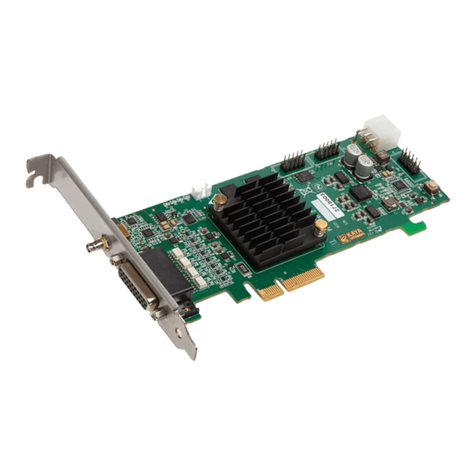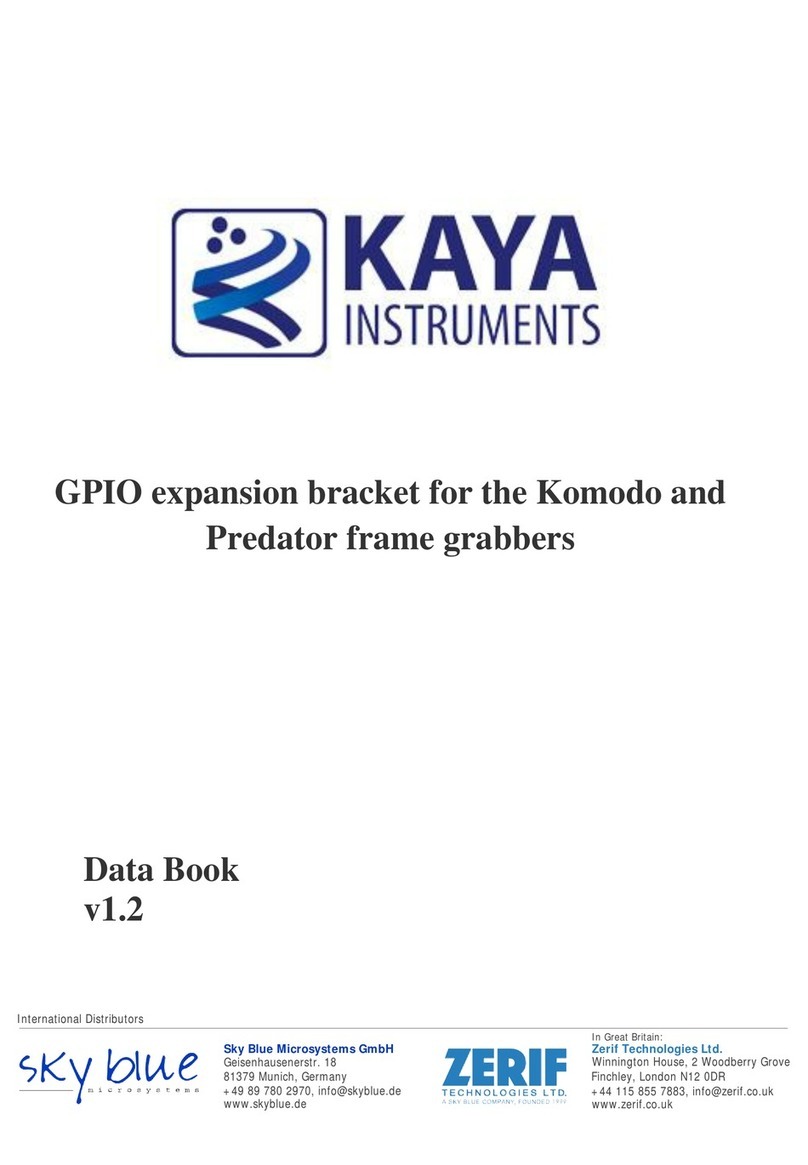Figures
FIGURE 1:BOARD BLOCK DIAGRAM................................................................................................................ 11
FIGURE 2: KOMODO CXP FRONT VIEW ........................................................................................................... 11
FIGURE 3: JTAG CONNECTOR.......................................................................................................................... 13
FIGURE 4: FLASH CONNECTOR....................................................................................................................... 13
FIGURE 5: CLOCKS PIN ASSIGNMENTS,SIGNAL NAME AND FUNCTIONS.......................................................... 14
FIGURE 6: I/O AND TRANSCEIVER USAGE........................................................................................................ 15
FIGURE 7: GENERAL PURPOSE INPUTS AND OUTPUTS ..................................................................................... 16
FIGURE 8: GENERAL PURPOSE LED’S LOCATION............................................................................................ 19
FIGURE 9: RZQ CONNECTION WHEN ONLY THE ON-BOARD MEMORY IS USED................................................ 22
FIGURE 10: RZQ CONNECTION WHEN ONLY THE SODIMM MEMORY IS USED............................................... 22
FIGURE 11: RZQ CONNECTION WHEN BOTH MEMORIES ARE USED ................................................................. 23
FIGURE 12: ON-BOARD DDR3 SIGNAL CONNECTIONS .................................................................................... 24
FIGURE 13: RX CHANNEL CONNECTION TO THE EQUALIZER ........................................................................... 33
FIGURE 14: TX CHANNEL CONNECTION TO THE DRIVER.................................................................................. 33
FIGURE 15: DEDICATED COAXPRESS LED’S LOCATIONS............................................................................... 34
FIGURE 16: FAN CONNECTIONS....................................................................................................................... 35
FIGURE 17: PCB MECHANICAL DIMENSIONS.................................................................................................. 36
FIGURE 18: FUNCTION DIAGRAM..................................................................................................................... 43
FIGURE 19: DDR3 SODIMM .......................................................................................................................... 46
FIGURE 20: KOMODO CXP WITH JTAG CONNECTION................................................................................. 47
Tables
TABLE 1: KOMODO CXP BOARD COMPONENTS .............................................................................................. 12
TABLE 2: CLOCKS PIN ASSIGNMENTS,SIGNAL NAME AND FUNCTIONS........................................................... 14
TABLE 3: GENERAL PURPOSE INPUT /OUTPUT PIN ASSIGNMENTS,SIGNAL NAME AND FUNCTIONS FOR J1.... 17
TABLE 4: GENERAL PURPOSE INPUT /OUTPUT PIN ASSIGNMENTS,SIGNAL NAME AND FUNCTIONS FOR J2.... 18
TABLE 5: GENERAL PURPOSE LEDS PIN ASSIGNMENTS,SIGNAL NAME AND FUNCTIONS ............................... 19
TABLE 6: PCIE PIN ASSIGNMENTS,SIGNAL NAME AND FUNCTIONS ................................................................ 21
TABLE 7: ON BOARD SDRAM PIN ASSIGNMENTS,SIGNAL NAME AND FUNCTIONS........................................ 27
TABLE 8: SODIMM PIN ASSIGNMENTS,SIGNAL NAME AND FUNCTIONS ........................................................ 30
TABLE 9: COAXPRESS CONNECTOR PIN ASSIGNMENTS,SIGNAL NAME AND FUNCTIONS ............................... 32
TABLE 10: COAXPRESS LEDS PIN ASSIGNMENTS,SIGNAL NAME AND FUNCTIONS........................................ 34
TABLE 11: FAN PIN ASSIGNMENTS,SIGNAL NAME AND FUNCTIONS................................................................ 35





























